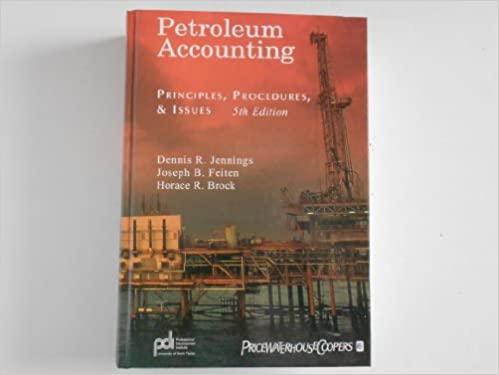Way Cool produces two different models of air conditioners. The company produces the mechanical systems in its components department. The mechanical systems are combined with the housing assembly in its finishing department. The activities, costs, and drivers associated with these two manufacturing processes and the production support process follow. Process Activity Overhead Coat Driver Quantity Components Changeover $ 477,950 Number of batches 790 Machining 395,200 Machine hours 8,320 Setups 289,600 Number of setups 160 $1,162,750 Finishing Welding $ 294,120 Welding hours 4,300 Inspecting 273,600 Number of inspections 855 Rework 47,300 Rework orders 220 615,020 Support Turchasing 102,975 Purchase orders 563 Providing space 30,700 Number of units 3,900 Providing utilities 44,960 Number of units 3,900 $ 258,635 Additional production information concerning its two product lines follows Model 145 1,300 1,000 Units produced Welding hours Batches Number of inspections Machine hours Setups Rework orders Parehase orders Model 212 2,600 3,300 395 390 5,210 80 465 3,050 80 100 375 186 Ches 1. Using ABC, compute the overhead cost per unit for each product line. 2. Determine the total cost per unit for each product line if the direct labor and direct materials costs per unit are $240 for Model 145 and $113 for Model 212. 3. W the market price for Model 145 is $944.05 and the market price for Model 212 is $544.92, determine the profit or loss per unit for each model Complete this question by entering your answers in the tabs below. Required 1 Required 2 Required Using ABC, compute the overhead cost per unit for each product line. (Round your final answers to 2 decimal places.) Expected Costs Expected Activity Activity Rate Model 145 Activity driver Overhead incurred assigned Model 212 Activity driver Overhead assigned S 477,950 395 200 280.600 790 Number of batches 8.320 Machine hours 100 Setup Activity Components Changeover Machining Ships Finishing Welding Inspecting Rework Support Purchasing Providing space and its $ 294.120 273.000 47.300 4.300 Welding hours 855 inspections 220 Rework orders $ 182.75 75,660 563 Purchase order 3.900 Units Total overhead con Total units produced Overheadcount Number of inspections Machine hours Setups Rework orders Purchase orders 3,050 80 100 375 390 5,270 BO 120 188 Required: 1. Using ABC, compute the overhead cost per unit for each product line. 2. Determine the total cost per unit for each product line if the direct labor and direct materials costs per unit are $240 for Model 145 and $113 for Model 212. 3. If the market price for Model 145 is $944.05 and the market price for Model 212 is $544.92, determine the profit or loss per unit for each model. Complete this question by entering your answers in the tabs below. Required 1 Required 2 Required 3 Determine the total cost per unit for each product line if the direct labor and direct materials costs per unit are $240 for Model 145 and $113 for Model 212. (Round your final answers to 2 decimal places.) Model 145 Model 212 Materials and Labor per unit Overhead cost per unit Total cost per unit Number or inspections Machine hours Setupe Rework orders Purchase orders 3,050 80 100 375 30 5,270 80 120 188 Required: 1. Using ABC, compute the overhead cost per unit for each product line. 2. Determine the total cost per unit for each product line of the direct labor and direct materials costs per unit are $240 for Model 145 and $113 for Model 212 3. If the market price for Model 145 is $944.05 and the market price for Model 212 is $544.92, determine the profit or loss per unit for each model Complete this question by entering your answers in the tabs below. Required 1 Required 2 Requinas If the market price for Model 145 is $944.05 and the market price for Model 212 is $544.92, determine the profit or loss per unit for each model. (Round your final answers to 2 decimal places.) Model 145 Model 212 Price per unit Cost per unit Profit (los) per unit










